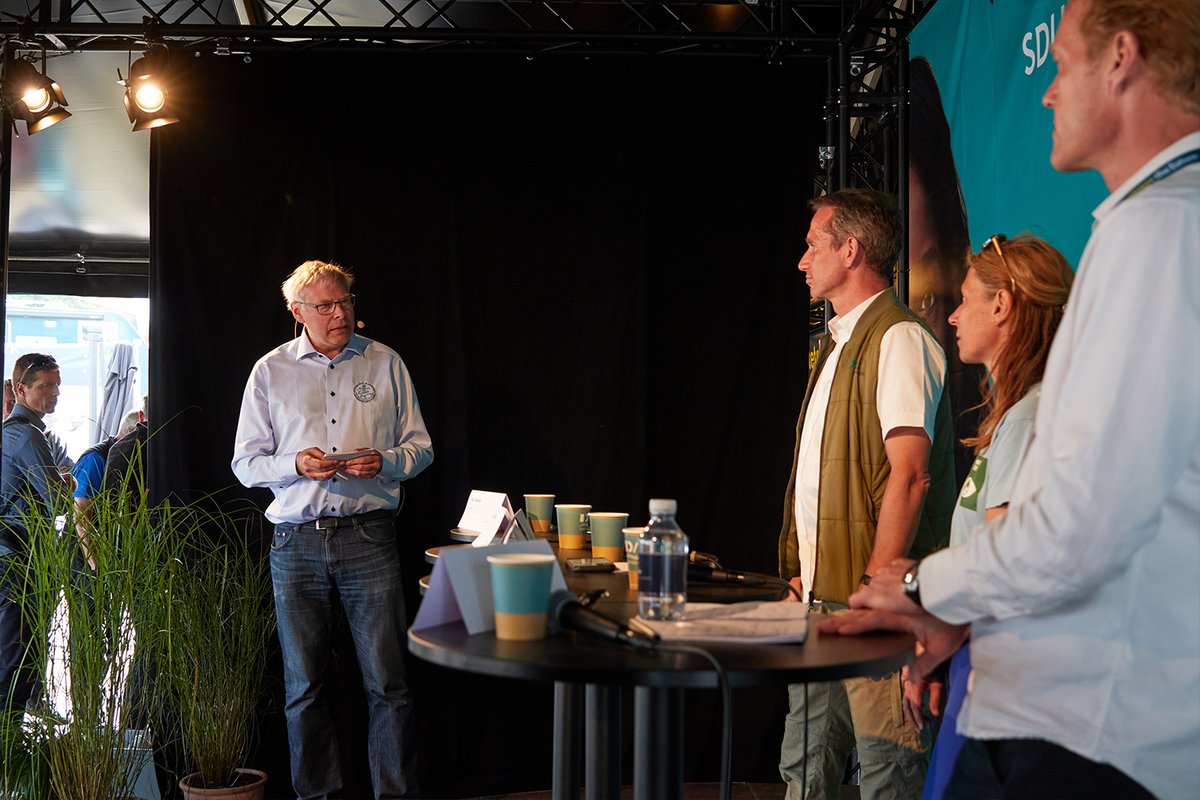The absolutely 'lowest hanging fruit' from Carbon Capture
How fast can we get a total green energy system? That was the title of the panel discussion Friday evening in the 'Tech Tent' at Denmark's Political Festival, Folkemødet, based on rising energy prices, the Prime Minister's warning of a shutdown of Russian gas and the latest report from IPCC, which emphasizes the need for immediate climate action of a long-term nature.

"We know many of the needed solutions, but we do not necessarily have them."
Those were the words from Professor and Head of Department Lars Ottosen, who were on panel Friday evening at Denmark's Political Festival, Folkemødet, along with Stine Grenaa Jensen from Energinet.dk, Kristian Jensen from Green Power Denmark and Ole Hvelplund from Nature Energy.
The topic was simple enough: how fast can we do a total green transition of our energy system? The cause: primarily the IPCC report from February, which states that man-made climate change is already causing dangerous and widespread disturbances in nature and affecting the lives of billions of people around the world - despite our efforts to mitigate risks.
2050 goals are no longer good enough – we no longer have as much time for a total green transition as expected. And what do we do then, the plan was to use gas during a transition period from fossil resources? Russian gas, which Europe plans to shut off due to the war in Ukraine.
Sun and wind is the obvious answer, said Kristian Jensen, CEO of Green Power Denmark:
“There is a great willingness to invest in renewable energy sources. State aid is no longer required. Renewable energy sources have gone from being an expense for taxpayers to being an income. All needed prerequisites to get started are present. Now, we just lack the permits,” he said.
Ole Hvelplund, CEO of Nature Energy, added:
"There is another renewable energy source that we have overlooked for far too long. It's our biological waste. That energy source is as steady as solar and wind, and we need to put it in our biogas plants. I urge, that we expand our view of renewable energy sources and look into both solar, wind and biological waste,” he said.
(The article continues below the picture)

Overall, Professor Lars Ottosen from the Department of Biological and Chemical Engineering agreed. He pointed out, however, that we are still not quite on par with the technologies needed in a total green transition.
Virtually our entire global manufacturing industries today are still largely based on fossil fuels and energy sources. And that must be taken care of in a green transition.
“We have the technologies on the energy production side, solar and wind, but there are still barriers to get them up and running. Cable capacity for instance needs to go up immediately – we can only act too slowl. And we don’t yet have all the technologies needed when it comes to Power-to-X. We need to build up production capacity and industry - fortunately that is also happening. Many Danish companies are in full swing with this,” he said.
He continued:
“And I agree with Ole Hvelplund about our biological waste. We need to get started on biogas production - it is the world's best biorefining technology. It's the best way to use the waste streams that Ole points out, and that's because the product fits into our existing infrastructure, and we get the absolute lowest hanging fruit from Carbon Capture that exists - the CO2 contained in biogas. There is a huge, huge potential in increasing biogas production.”
Contact
Professor Lars Ottosen
Mail: ldmo@eng.au.dk
Tel.: +4551371671
